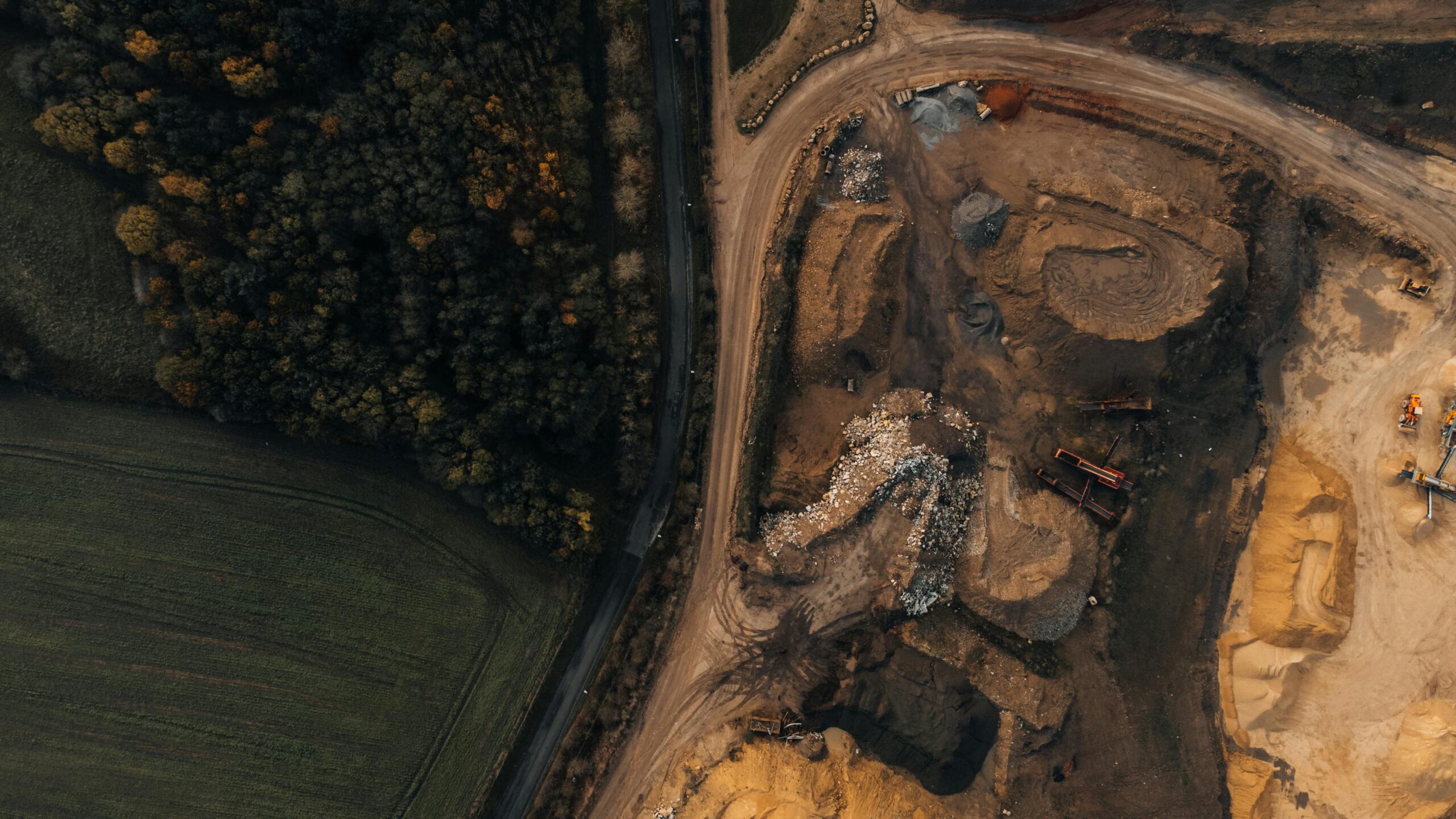Space mining promises vast resources beyond Earth, but its environmental consequences—both cosmic and terrestrial—demand urgent examination as commercial operations edge closer to reality. 🚀
The New Gold Rush Beyond Our Atmosphere
Humanity stands at the precipice of a transformative era where celestial bodies are no longer just subjects of scientific curiosity but potential sources of unprecedented wealth. Asteroids laden with platinum, rare earth elements, and water ice represent trillions of dollars in potential revenue. Companies like Planetary Resources and Deep Space Industries have already laid groundwork for asteroid mining operations, while governmental space agencies explore lunar resource extraction.
This cosmic gold rush carries profound implications for our planet’s environment and the pristine ecosystems of space itself. As we prepare to extract resources from asteroids, the Moon, and potentially Mars, understanding the environmental ramifications becomes not just prudent but essential for sustainable space development.
Understanding the Scale of Space Mining Operations
Space mining encompasses several distinct approaches, each with unique environmental considerations. Near-Earth asteroids contain metals worth an estimated $700 quintillion collectively, while the Moon harbors helium-3 for potential fusion energy and water ice for rocket fuel production.
The proposed scale of operations staggers the imagination. A single metallic asteroid measuring just 500 meters across could contain more platinum group metals than have been mined throughout human history. This abundance drives investment, but it also amplifies potential environmental impacts proportionally.
Types of Space Mining Activities
- Asteroid surface mining for metallic and rare earth elements
- Lunar regolith extraction for helium-3 and titanium
- Water ice harvesting from permanently shadowed craters
- In-situ resource utilization (ISRU) for fuel and construction materials
- Debris collection and recycling from defunct satellites
Environmental Impacts on Earth’s Orbital Environment
Perhaps the most immediate environmental concern stems from increased launch activities required to support space mining operations. Each rocket launch releases significant quantities of greenhouse gases, black carbon, and other pollutants directly into the upper atmosphere where they persist longer than ground-level emissions.
Current estimates suggest that achieving viable space mining operations would require hundreds or thousands of launches annually—far exceeding today’s global launch cadence. The environmental footprint of this escalation extends beyond emissions to include noise pollution, potential impacts on ozone depletion, and disruption to atmospheric chemistry at altitudes where recovery mechanisms function differently.
The Growing Challenge of Space Debris
Space mining infrastructure inevitably contributes to orbital debris—already a critical concern with over 34,000 tracked objects larger than 10 centimeters orbiting Earth. Mining operations require processing facilities, transportation vehicles, storage depots, and communication networks, each representing potential debris sources through collisions, malfunctions, or operational discards.
The Kessler Syndrome scenario, where cascading collisions create exponentially increasing debris fields, becomes more plausible as orbital infrastructure density increases. This threatens not just mining operations but all satellite-dependent services including GPS, telecommunications, weather forecasting, and climate monitoring—ironically undermining our ability to track environmental changes on Earth.
Protecting Pristine Celestial Environments 🌙
While space appears vast and empty, celestial bodies represent unique scientific laboratories preserving records of solar system formation spanning billions of years. The Moon’s permanently shadowed craters contain pristine ice potentially holding clues about water delivery to early Earth and organic molecule formation.
Mining operations risk irreversibly contaminating or destroying these scientific resources before adequate study occurs. Lunar dust disturbed by mining activities could settle across scientifically valuable regions, while chemical contamination from processing operations might alter the composition of samples collected miles away.
Planetary Protection Protocols Under Pressure
Current planetary protection guidelines, established through the Outer Space Treaty of 1967, aim to prevent harmful contamination of celestial bodies. However, these frameworks predate commercial space mining and lack enforcement mechanisms for private entities operating beyond traditional governmental control.
The tension between scientific preservation and resource exploitation demands updated international agreements. Some researchers advocate for “planetary parks”—protected regions of scientific or aesthetic value where mining is permanently prohibited, similar to national parks on Earth.
Energy Consumption and Carbon Footprint Considerations
Space mining proponents often argue that extracting resources in space reduces environmental damage on Earth by eliminating terrestrial mining operations. This logic requires scrutiny when examining the complete energy lifecycle of space-based extraction.
Launch energy requirements alone dwarf terrestrial mining operations. Escaping Earth’s gravity well demands approximately 10 kilowatt-hours per kilogram, meaning a single ton of material requires energy equivalent to powering an average home for months. While renewable energy could theoretically power these operations, current infrastructure relies heavily on fossil fuels.
| Activity | Estimated CO2 Emissions (tons) | Energy Requirement (GWh) |
|---|---|---|
| Single Heavy Launch | 200-400 | 0.3-0.6 |
| Orbital Processing Facility Construction | 50,000-100,000 | 150-300 |
| Annual Mining Operations (projected) | 500,000-1,000,000 | 1,500-3,000 |
The Water Question: Resource or Environmental Concern?
Water ice mining, particularly from the Moon and asteroids, presents unique environmental considerations. Proponents view water extraction as environmentally beneficial—providing rocket fuel and life support without depleting Earth’s resources. However, this perspective overlooks significant complications.
Lunar water ice exists in finite quantities within permanently shadowed craters near the poles. These regions represent some of the coldest places in the solar system, preserving not just water but potentially complex organic molecules and volatile compounds of immense scientific value. Large-scale extraction could deplete these resources within decades, eliminating unique research opportunities forever.
Atmospheric Contamination from Space-Based Processing
Processing mined materials requires significant chemical and thermal treatment, releasing gases and particulates. While space’s vacuum disperses these emissions, they don’t simply disappear. Volatile compounds released near Earth could interact with the upper atmosphere, while emissions at asteroid sites might create localized clouds affecting astronomical observations and potentially contaminating scientific samples.
Biological Contamination: A Two-Way Risk 🦠
Forward contamination—transporting Earth organisms to other celestial bodies—poses environmental and scientific risks. Microorganisms hitchhiking on mining equipment could establish themselves in unexpected niches, particularly where water exists. This would not only compromise scientific studies searching for indigenous life but potentially create unforeseen ecological consequences in alien environments.
Equally concerning is backward contamination—bringing extraterrestrial materials to Earth. While asteroid and lunar samples likely pose minimal biological risk, processing facilities handling vast quantities of space materials could introduce unknown chemical or physical hazards. Comprehensive containment and testing protocols must precede large-scale material return.
Economic Pressures Versus Environmental Stewardship
The commercial nature of space mining creates inherent conflicts between profit maximization and environmental protection. Unlike governmental space programs bound by international treaties and public accountability, private companies answer primarily to shareholders and market pressures.
This dynamic risks creating a “tragedy of the commons” scenario in space, where individual actors pursuing rational self-interest collectively deplete or damage shared resources. Without robust international governance frameworks and enforcement mechanisms, environmental considerations may succumb to competitive pressures driving corners-cutting and externality disregard.
The Luxembourg Model and Regulatory Challenges
Luxembourg pioneered national legislation explicitly allowing companies to own space resources, followed by the United States with the SPACE Act of 2015. While these frameworks provide legal certainty encouraging investment, they fragment governance and potentially undermine collective environmental protection efforts.
The absence of comprehensive international environmental standards for space mining creates regulatory arbitrage opportunities, where companies domicile in jurisdictions with minimal environmental requirements. This race-to-the-bottom dynamic threatens both space environments and Earth-based ecosystems affected by launch and processing operations.
Technological Solutions and Sustainable Practices ♻️
Despite legitimate environmental concerns, technological innovations could significantly mitigate space mining’s ecological footprint. Reusable launch systems like SpaceX’s Falcon 9 and Starship dramatically reduce per-kilogram launch costs and environmental impacts through amortization across multiple missions.
In-situ resource utilization represents perhaps the most environmentally beneficial approach—using space resources to support space activities rather than launching everything from Earth. Manufacturing fuel, construction materials, and life support consumables from lunar or asteroid resources eliminates the need for Earth-based production and launch of these items.
Emerging Green Technologies for Space Operations
- Solar-electric propulsion systems eliminating chemical propellant emissions
- Closed-loop life support systems minimizing waste and resource consumption
- Autonomous mining systems reducing human presence requirements
- Electromagnetic launch systems (space elevators, mass drivers) bypassing chemical rockets
- Asteroid redirection using solar sails and ion drives instead of explosive methods
The Responsibility of Scientific Assessment
Comprehensive environmental impact assessments must precede large-scale space mining operations. These evaluations should examine not just direct operational effects but cumulative impacts across the entire activity chain—from terrestrial manufacturing through launch, operation, and eventual decommissioning.
Such assessments require interdisciplinary collaboration spanning atmospheric science, orbital mechanics, planetary geology, astrobiology, and environmental policy. Current understanding remains insufficient for confident impact prediction, necessitating precautionary approaches and adaptive management strategies that can respond to unexpected discoveries.
International Cooperation: The Path Forward 🌍
Meaningful environmental protection for space mining requires strengthened international cooperation and updated legal frameworks. The Outer Space Treaty provides foundational principles but lacks specific environmental standards and enforcement mechanisms suited to commercial resource extraction.
Proposed solutions include an International Space Mining Authority similar to the International Seabed Authority governing deep-ocean mining. Such an organization could establish environmental standards, conduct independent assessments, monitor compliance, and impose penalties for violations—creating accountability currently absent from space commerce.
Key Elements for Sustainable Space Mining Governance
- Mandatory environmental impact assessments before licensing operations
- Protected zones preserving scientifically or culturally significant regions
- Emissions standards for launches and space-based processing
- Debris mitigation requirements and end-of-life disposal protocols
- Transparency mandates enabling independent monitoring and public accountability
- Benefit-sharing mechanisms ensuring space resources serve humanity broadly

Balancing Progress and Preservation
Space mining need not represent an environmental disaster, but neither can it proceed without serious environmental consideration. The resources available beyond Earth could indeed reduce pressure on terrestrial ecosystems while providing materials for sustainable energy, advanced manufacturing, and continued space exploration.
Achieving these benefits requires deliberate choices prioritizing long-term sustainability over short-term profit. It demands international cooperation transcending national interests and corporate competition. Most fundamentally, it requires recognizing that space environments—however alien and distant—deserve protection as part of our cosmic heritage.
The decisions made today will determine whether space mining represents humanity’s maturation into responsible cosmic stewardship or merely exports our worst environmental habits to new frontiers. As commercial operations transition from aspiration to reality, the window for establishing robust environmental protections rapidly closes.
We stand at a crossroads where technological capability races ahead of ethical reflection and regulatory frameworks. The environmental impact of space mining will ultimately be determined not by technical limitations but by collective choices reflecting our values and vision for humanity’s future among the stars. The final frontier deserves better than becoming the final environmental frontier—a realm sacrificed to expedience and short-sighted extraction.
The cosmos has waited billions of years unchanged by human activity. How we conduct ourselves as we finally reach outward to touch these ancient worlds will define not just our environmental legacy but our worthiness as a spacefaring civilization. 🌟
Toni Santos is an exoplanet-researcher and space-ecology writer exploring how alien biosphere models, astrobiology frontiers and planetary habitability studies redefine life beyond Earth. Through his work on space sustainability, planetary systems and cosmic ecology, Toni examines how living systems might emerge, adapt and thrive in the wider universe. Passionate about discovery, systems-design and planetary life, Toni focuses on how ecology, biology and cosmology converge in the exoplanetary context. His work highlights the frontier of life’s possibility — guiding readers toward the vision of ecosystem beyond Earth, connection across worlds, and evolution of consciousness in cosmic habitat. Blending astrobiology, ecology and system theory, Toni writes about the future of living worlds — helping readers imagine how life, planet and purpose might converge beyond our Earth. His work is a tribute to: The exploration of life in exoplanetary systems and the unknown biospheres The vision of space habitability, sustainability and planetary design The inspiration of universal ecology, cosmic connection and evolutionary potential Whether you are a scientist, dreamer or world-builder, Toni Santos invites you to explore the exoplanetary frontier — one world, one biosphere, one insight at a time.




